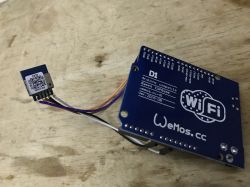Hi
I have 15 YTDY cables (3 pairs per cable i.e. 45 pairs) in a star system coming together at the control panel. Used to start will be 18 pairs (window contacts and control of 3 fans), the rest is for future development.
Home Assistant is not yet standing, going one at a time. For information, it will stand either on the RPI 3+ or on the QNAP NAS HS-251+ (I happen to have both, hence the choice). In the future, there will definitely be some ZigBee-based sensors.
I've already read that I should get some sort of GPIO panel, which I should connect to something that supports MQTT and further HA. Some people recommend that the MQTT server should also be a separate device, so I may go in that direction.
And here's where I ask for help. How do I get these cables together and expose the interface for further work? I'm asking about specific devices to use. Price-wise I would like to fit in a few hundred zloty max. Any soldering is rather out of the question, but when it comes to some firmware changes or programming, I can handle it.
EDIT
I don't need (for what I'm asking) WiFi support. I have all my equipment in the control unit and it is wired as well as any cable connections.
Thank you in advance for your answers
I have 15 YTDY cables (3 pairs per cable i.e. 45 pairs) in a star system coming together at the control panel. Used to start will be 18 pairs (window contacts and control of 3 fans), the rest is for future development.
Home Assistant is not yet standing, going one at a time. For information, it will stand either on the RPI 3+ or on the QNAP NAS HS-251+ (I happen to have both, hence the choice). In the future, there will definitely be some ZigBee-based sensors.
I've already read that I should get some sort of GPIO panel, which I should connect to something that supports MQTT and further HA. Some people recommend that the MQTT server should also be a separate device, so I may go in that direction.
And here's where I ask for help. How do I get these cables together and expose the interface for further work? I'm asking about specific devices to use. Price-wise I would like to fit in a few hundred zloty max. Any soldering is rather out of the question, but when it comes to some firmware changes or programming, I can handle it.
EDIT
I don't need (for what I'm asking) WiFi support. I have all my equipment in the control unit and it is wired as well as any cable connections.
Thank you in advance for your answers





